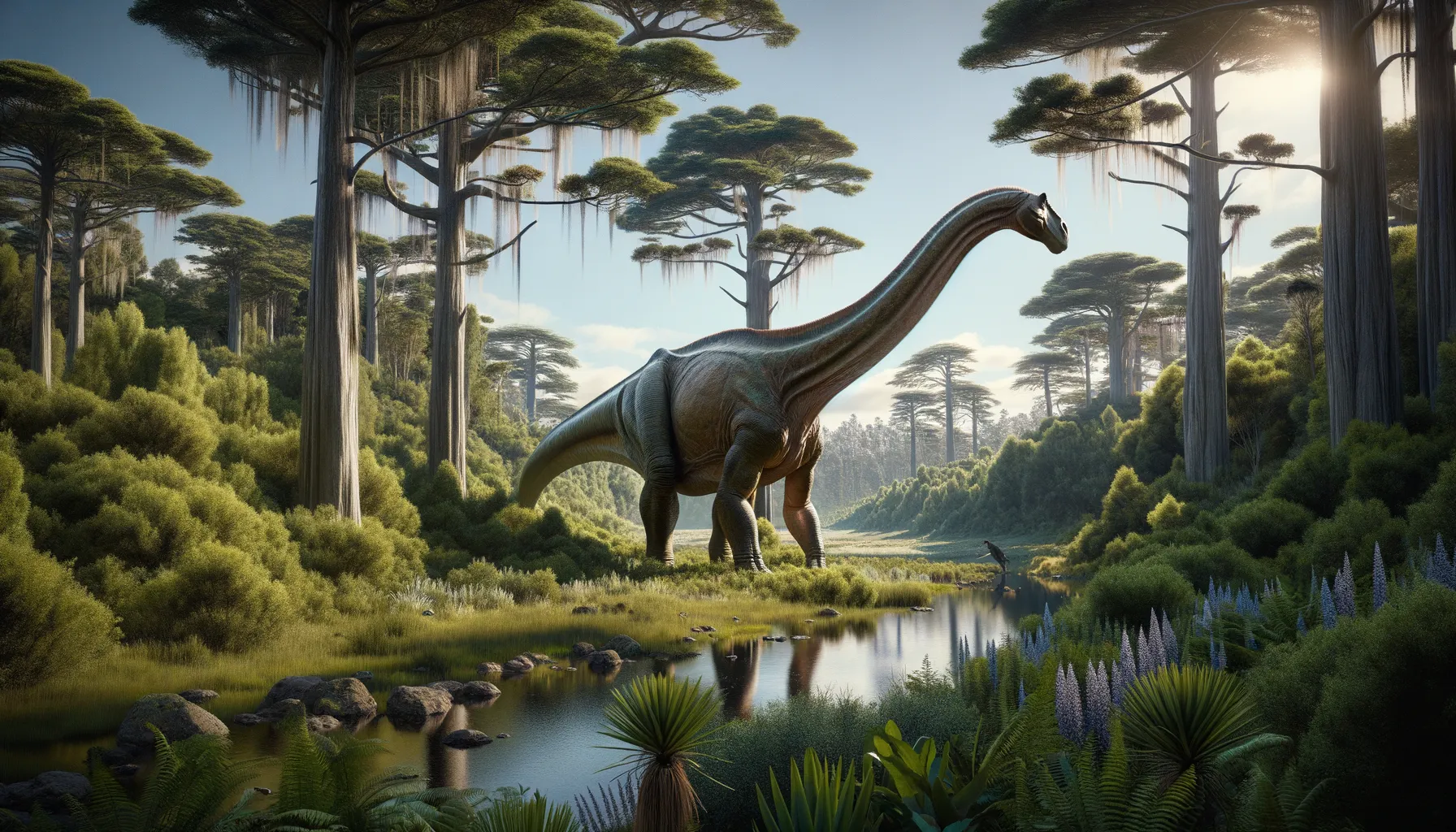
Pellegrinisaurus
A giant of the Cretaceous treetops
Period
Cretaceous
Length
Measured about 25 to 30 meters long.
Height
Approximately 6 to 8 meters tall.
Weight
Estimated to weigh around 20 to 30 tons.
Pellegrinisaurus was a massive, long-necked dinosaur belonging to the sauropod group, roaming the Earth during the Cretaceous period. With its huge body and towering neck, it grazed the treetops of prehistoric Argentina. Its fossils provide key insights into the diverse ecosystem it inhabited. This giant was among the largest land animals, showcasing nature's grandeur during the age of dinosaurs. Its fossil remains help unravel the history of the Cretaceous world.
Diet
Pellegrinisaurus was a herbivore, primarily consuming leaves and foliage from tall trees. Its lengthy neck allowed it to reach high vegetation, reducing competition for food.
Hunting
Being a plant-eater, Pellegrinisaurus did not hunt. It spent much of its time foraging through the prehistoric forest landscape for sustenance.
Environmental challenges
Pellegrinisaurus faced challenges such as finding sufficient food due to its large size and the changing climate of its era. Seasonal variations could have affected the availability of its leafy diet. Predation by large theropods was another concern, requiring constant vigilance, despite its massive stature providing some natural defense.
Speed
Likely slow due to its large size.
Lifespan
Estimated to be several decades.
First discovery
Discovered in Argentina during the 1990s.
Fun Facts
- Pellegrinisaurus was a massive dinosaur that belonged to the group of long-necked dinosaurs known as sauropods.
- This dinosaur lived during the Late Cretaceous period, which is the same era when the last of the dinosaurs roamed the Earth.
- Fossils of Pellegrinisaurus have been discovered in Argentina, giving scientists clues about its life in ancient South America.
- Pellegrinisaurus is estimated to have measured over 30 meters long, making it one of the larger sauropods.
- Despite its enormous size, Pellegrinisaurus likely moved at a slow pace due to its massive weight.
- The name Pellegrinisaurus honors Argentine geologist Alberto Pellegrini for his contributions to the field.
- Pellegrinisaurus had a plant-based diet, grazing on the lush vegetation that covered its habitat millions of years ago.
Growth and Development
The growth of Pellegrinisaurus was likely slow, taking many years to reach its full enormous size. Its development required vast amounts of food to provide energy for such a large creature. Fossil evidence suggests prolonged periods of juvenile development.
Habitat
Pellegrinisaurus lived in lush, warm climates with plenty of vegetation in what is now South America. The Cretaceous period offered vast forested areas, ideal for such large herbivores. This habitat played a crucial role in its survival, providing ample food sources.
Interaction with other species
Pellegrinisaurus coexisted with various other dinosaur species, including predators it had to avoid. Its presence would have influenced the ecosystem, affecting the food chain and plant distribution. Interaction was likely minimal aside from competing herbivores for food resources.
Natural lifespan
It is believed Pellegrinisaurus had a natural lifespan that extended several decades.
Reproduction
Pellegrinisaurus likely laid eggs, as is typical for dinosaurs, in carefully chosen nesting grounds. Reproductive behavior might have involved specific mating seasons and potentially some degree of parental care post-hatching.
Social behaviour
Due to its size, Pellegrinisaurus might have gathered in groups for protection against predators. Social behavior could include minimal interaction beyond reproduction and communal feeding.
Fossil locations
Its fossils have been primarily discovered in Argentina, providing vital information on its existence. These sites continue to offer significant paleontological insights into the life and times of the Cretaceous period in South America.
